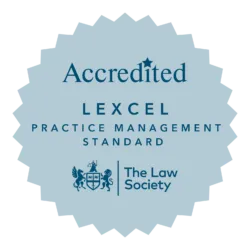
International Workers’ Memorial Day and asbestos in schools
Presentation for Workers’ Memorial Day, 28 April 2011, by Julie Winn, Partner and Chair of the Joint Union Asbestos Campaign.
International Workers Memorial Day is intended to remember all those killed at or by work and to strengthen our resolve to reduce risk and protect people from injury in the workplace.
I feel sure that it is no coincidence that it originated in Canada – one of the world’s largest exporters of asbestos.
At the memorial today at noon we commemorated those who have died at work.
This afternoon I wish to focus attention and reflect on school place deaths from mesothelioma.
UK stats for 2008 state: There were 9.7 million full-time and part time pupils in 33,700 schools in 2007-08.
Each of the 33,700 schools is a workplace for teachers and support staff.
In the UK Teachers deaths have risen year on year.
In 1980 when occupational health records first began, 3 teachers on average died each year from mesothelioma.
In the latest period the figure has increased to 16 deaths on average per year.
Schools are special workplaces as they contain large numbers of children. For every teacher working in a building containing asbestos there will be on average 30 children.
For this reason alone asbestos in schools deserves special consideration today if we are not to leave a tragic legacy for future generations.
ASBESTOS IN SCHOOLS
The aim of Asbestos in Schools group and Joint Union Asbestos Campaign is to make United Kingdom schools and colleges safe from the dangers of asbestos both for staff and pupils.
We wish to see all asbestos removed from all schools.
However realistically, the focus in the short and medium term must be on the safe management of asbestos in schools and colleges.
THE SCALE OF THE PROBLEM
Many schools built between 1940 and 1980 contain asbestos containing materials.
Nick Gibb MP and Minister of State for Schools confirmed that “our best estimate in September 2008 was that around 70% of school buildings contain asbestos containing materials (ACM)”.
Asbestos Containing Materials can be dangerous if they fall into disrepair or if there is an unexpected released in an asbestos incident.
13,000 schools were built post war, and others were refurbished using large quantities of brown asbestos (amosite) in their construction, some contain blue asbestos (crocidolite), and the majority contain white asbestos (chrysotile).
All of the asbestos in our schools is old and we suspect that much of it is deteriorating.
Asbestos fibres, if inhaled, can cause a number of serious illnesses – the most severe of which is mesothelioma – an almost always fatal cancer normally affecting the lining of the lungs. This illness is associated with all levels of exposure including low level exposure – the type of which can happen in schools containing asbestos.
Occupants of schools are dying from mesothelioma.
TEACHERS’ DEATHS
The number of school teachers dying from mesothelioma has increased year on year, from 3 a year in the 1980s to 16 a year in the latest period.
More than 228 school teachers have died of mesothelioma since 1980 with 140 dying in the last ten years.
School caretakers, cleaners, cooks, secretaries, teaching assistants and nursery nurses have also died of the cancer.
Some argue that the figures include spontaneous incidents of mesothelioma.
A new paper written in the American Journal of Industrial Medicine adds to the evidence that it is very rare that mesotheliomas are caused by anything other than exposure to asbestos.
The study examined more than 2,000 autopsies carried out between 1883-1910 and concluded that “The results indicate that the incidence of malignant mesothelioma prior to widespread commercial introduction of asbestos was very low.”
SCHOOLS ARE SPECIAL WORKPLACES
Schools are a special place because they contain large numbers of children.
AIS believes that Children maybe more at risk from the dangers of asbestos than adults because their physiology is developing, and they will live longer to allow any asbestos disease to develop.
Everyone goes to school so the numbers facing potential exposure are much larger than in any other workplace.
A report by the Medical Research Council stated “It is not unreasonable to assume, therefore, that the entire school population has been exposed to asbestos in school buildings… Exposure to asbestos at school may therefore constitute a significant part of total exposure.”
CHILDREN ARE EXPOSED TO ASBESTOS IN SCHOOLS
Although it is known how many teachers have died it is not known, because of the long latency, how many children have subsequently died.
Diane Willmore. In March this year the Supreme Court upheld the judgement in the Dianne Willmore case which found that she had been negligently exposed to asbestos at school as a child.
Dianne Willmore contracted and died from mesothelioma as a result of negligent exposure to asbestos by Knowsley Metropolitan Borough council when she was a pupil at school.
This is the first case successfully taken through the courts of a former pupil exposed to asbestos at school.
THE RISK TO CHILDREN
The risk of asbestos to children has not been assessed.
More than two years ago, AIS asked the Prime Minister to task the government’s advisory committee on science, WATCH, to assess the risk of asbestos to children.
He did not do so.
WATCH did say that :-
“Its scientific judgment is that there are risks of asbestos-induced cancer arising from work related cumulative exposures below 0.1 fibres / ml.years. The risk will be lower, the lower the exposure, but “safe” thresholds are not identifiable. Where potential exposure to amphiboles, particularly crocidolite are below 0.1 fibres/m/.per year, the available scientific evidence suggests no basis for complacency, but rather a basis for active risk management.”
However this is set against the background of the Young report on Health and Safety and the claim that schools are a low risk low hazard workplace.
The HSE subsequently have tried to devise a classroom risk assessment. The risk assessment is not a risk assessment but a classroom checklist which trivialises the dangers of asbestos in schools.
Both the Young Report and the classroom risk assessment fail to address the fact that Britain has the highest incidence of mesothelioma in the world and ignores the presence of asbestos in 70% of school buildings.
GOVERNMENT POLICY
Nick Gibb MP – Minister of State for Schools
“Providing that asbestos containing materials are maintained in good condition, they can be left in situ and managed until the building reaches the end of its life…”
The policy has not worked.
Frequent asbestos incidents have occurred causing widespread contamination and exposure of the teachers, support staff and children.
Just last month about 70 primary school children were exposed to asbestos when a science lesson explosion lifted ceiling tiles releasing dust in a Berkshire school hall.
Pupils were evacuated from the hall at St Mary’s in Kintbury, Hungerford, when a chemical test involving a hydrogen balloon caused a “sonic reaction”.
Health and safety officers kept the children’s uniforms for testing and the pupils were sent home in their PE kits. The hall has been sealed off and all parents have been informed. The ceiling tiles were “insulating board” and contained asbestos.
On 28th March 2011 the HSE finally lifted the improvement notice they had served on the Highland council in May 2009 for a “Failure to prepare and implement written plans that identify those parts of school premises in which asbestos is, or is liable to be present and that specify the measures necessary for adequately managing the risk.”
The Council were unaware where the asbestos was in 123 of their 197 schools, and had failed to manage the asbestos.
There were two breaches under the Health and Safety at Work Act for failing to ensure the health and safety of their employees at their schools and for exposing the parents and children to a risk to their health and safety.
There were three further breaches under the Control of Asbestos Regulations for failures in asbestos management and a failure to train their employees.
Labour’s “Building Schools For The Future” – BSF – cost £55bn. When it was stopped by this Government, 700 schools had their funding for rebuilding and refurbishing axed. They had, with the promise of the funding, not for many years invested in the old school buildings.
An unintended but good consequence of BFS was the beginning of asbestos removal from our secondary schools.
That has halted now.
If a school building is in poor condition then so is the asbestos.
According to the CEO of PfS 80% of the school stock is beyond its shelf life, and an FT report quotes DfE estimates of £8.5bn backlog of repairs.
The Government has stated that it will prioritise the most dilapidated schools for refurbishment, but if they are to achieve this then they need to know the extent and cost of one of the potentially most expensive items – the asbestos.
Only then can they make realistic funding estimates and allocate proportionate resources.
CAPITAL SPENDING REVIEW REPORT ON SCHOOLS
The Schools Capital review was published in April 2011.
It highlighted that a significant part of the school estate was in an unacceptable state of repair, and it criticised the Government for being unaware of the condition of the school estate as they have been unable to allocate resources where they are most needed.
It found that there was no central data bank of the condition of the nation’s schools.
The recommendation is that there should be a national survey of the condition of all school buildings with the data centrally collected.
So that Schools in the worse condition can then be identified and given priority.
Although asbestos is not mentioned by name, it is central to this for as the schools deteriorate then so does the asbestos.
This will present an opportunity for phased removal of asbestos from schools with priority been given to those schools whose asbestos is in the most dangerous state.
It is essential that asbestos is an integral part of this study, and that, as well as determining the condition of the nation’s schools, the extent, type and condition of the asbestos they contain is determined.
JUSTIFICATION OF GOVERNMENT’S POSITION
The recent HSE survey of asbestos management in schools is being used by the government to justify their policy of managing asbestos in schools rather than removing it.
“The majority of local authorities in England with ‘system build’ schools have procedures and precautions in place to manage asbestos safely, according to a survey and follow-up inspection programme”
“If asbestos is properly managed, remains undamaged and undisturbed then its presence alone should not be a cause for concern. However, there is no room for complacency; managing asbestos in buildings needs effective and ongoing attention. Those most likely to be exposed are tradesmen who may disturb it through their work – so it is essential that their work is carefully planned and managed.”
I think a closer reading of the survey is required.
Of 152 Local Authorities – 42 (almost 30%) failed to satisfy the HSE that they were meeting their statutory duties when it came to managing asbestos
32 councils were given further advice about practical improvements
10 authorities receiving enforcement notices to improve asbestos management standards
HSE stated that those responsible for managing asbestos must be properly trained and management plans which set out the measures to be taken to manage the risks must be in place and readily available.
JUAC SURVEY
JUAC decided to carry out our own survey of health and safety reps to find out whether there was in practice proper training and readily available asbestos management plans as these results did not align with the experience of our members on the ground.
80% of safety representatives had either not had asbestos awareness training, or did not know if they had.
Only 28% of respondents said the presence of asbestos containing materials (ACM) was clearly marked in the workplace.
It is worrying that such a large gap exists when it comes to marking the presence of asbestos. The recognisable symbol can be discreetly placed on the ACM, alerting a contractor to the presence of asbestos and helping to protect staff and the student body. The teaching profession routinely has a fluid turnover of staff, and without clearly marking ACMs, new staff will be unaware of the presence of asbestos.
Only one third were aware that an asbestos register was kept.
Only 20% confirmed that an asbestos register was shown to contractors before they started work.
The lack of knowledge of a register’s existence shows asbestos awareness training in schools is needed for ALL staff. This is especially important for those dealing with contractors.
70 percent said they had not been consulted on the issue of asbestos management, even though this is part of the safety representatives’ rights under the Safety Representatives and Safety Committees Regulations.
Only 20 percent said they had confidence that the plan was being acted on.
The survey shows the worrying gap between what LAs claim to the HSE is happening, and the reality at ground level.
OPEN POLICY
A policy of openness has been lacking.
Because of this people are unaware of the scale of the problem and have not questioned Government policies and their failure to tackle to problem.
It is common that parents are not informed of the presence of asbestos in their children’s schools and therefore feelings of mistrust and anger are engendered following an incident.
In contrast in the USA parents must be given an annual report on the presence and condition of any asbestos and the measures taken to manage it. 25 years ago the US government assessed the scale of the asbestos problem in their schools and the risks, and because of the particular vulnerability of children they introduced laws specifically for schools and allocated proportionate resources so that they could manage their asbestos
A basic principle of health and safety is to assess the scale of the problem and the risk.
The Government has failed to apply this basic principle.
In 2009 the Asbestos in Schools group asked the PM if he would task the government’s advisory committee on science, WATCH to assess the risks to children. This did not happen.
In December 2010 in answer to a parliamentary question Nick Gibb , stated that “The Department has no plans to commission an assessment of the risks from asbestos in schools.”
The government has accepted all Lord Young’s recommendations based on his unsubstantiated declaration that schools are a low hazard, low risk workplace.
By refusing to assess the scale of the problem and the risks it is an easy for Government to deny there is a problem and to justify its policy.
THE WAY FORWARD
Risk Assessment
In February 2011 the DfE Asbestos steering group unanimously recommended to the DfE Minister that the Department Of Health should commission an assessment of the asbestos risks to children.
He has not yet responded.
An assessment of the asbestos risks to children should be undertaken without further delay.
Assessment of extent, type and condition of asbestos
The Government does not know the extent, type and condition of asbestos in the nation’s schools because they have never undertaken an audit.
That is despite the fact this should be a relatively simple matter as all LAs should have collated the data. Some LAs have a large number of schools containing asbestos, others have considerably less. Also, some LAs have maintained their schools and have managed their asbestos. Others have not.
A national audit of the extent, type and condition of asbestos in each school would enable the Government to target proportionate resources to enable all schools to safely manage their asbestos, and produce a priority list for refurbishment or replacement of those schools presenting the greatest risk.
Regulation of standards of asbestos management
Schools that are not safely managing their asbestos should be identified and brought up to a satisfactory standard.
On the ground inspections are a way of determining standards.
Until relatively recently HSE rarely inspected the standards of asbestos management in schools.
The HSE and DfE survey of local authorities was flawed in that it relied on LA’s admitting that they were not complying with the regulations to trigger an inspection.
Of the limited number of on the ground inspections that were carried out, a quarter warranted enforcement action for failures in asbestos management, and all required further guidance.
This showed that a significant proportion of local authorities had serious flaws in their systems of asbestos management.
It therefore gives a misleading impression when the Government claim that: “The majority of local authorities demonstrated that they have procedures and precautions in place to manage asbestos safely.”
Despite this they have used it to justify their policy of management rather than removal of asbestos in schools.
Because of the particular vulnerability of children, schools have to be treated as a special place.
Asbestos problems must be identified before they result in the exposure of staff and pupils.
It is therefore important that the policy of proactive inspections for schools is readopted, and that a system of on the ground inspections is evolved so that all schools can achieve and maintain safe standards of asbestos management.
Training
It is recommended that headteachers, school managers, governors and local authorities are trained in asbestos management and that teaching staff and support staff receive asbestos awareness training.
Standards should be set and the management training should be mandatory.
The training should be properly funded.
Guidance
The present asbestos guidance for schools is fragmented and some is of an unacceptable standard.
It is recommended that guidance should be specifically written as a one stop reference for managing asbestos in schools.
It should clearly define areas of responsibility.
It should give clear definitions and examples of best practice.
It should outline the standards to be achieved in training.
It should reccommend thorough asbestos surveys.
Phased Removal
Although the total removal of asbestos must be the goal, it cannot be achieved overnight.
In the 1980s the Association of Metropolitan Authorities and ILEA had a policy of phased removal by prioritising the most dangerous materials.
The practice stopped when the organisations ceased to exist, however phased removal remains the policy of Nottinghamshire.
If this is adopted as a national policy the problem will eventually be resolved.
If phased removal is not adopted asbestos will remain a problem in schools indefinitely.
It is recommended that all schools identify their asbestos and a policy is adopted of phased removal, prioritising the most dangerous asbestos materials first.
Openness
There has been a lack of transparency over the whole issue of asbestos in schools.
The reason being that the Government are concerned that if the public were aware of the true scale of the problem they would panic and demand the removal of all asbestos from their children’s schools and the cost of removal would be too high.
By keeping the facts from the public, successive governments have managed to delay having to tackle the problems.
That policy is no longer sustainable as there is increasing public awareness, and the public now expect positive action to be taken.
The policy of openness in the USA does not create panic, but it does mean that staff and parents are aware of the dangers of asbestos and the best measures to be implemented to ensure the safety of the occupants of their schools.
If the problem of asbestos in schools is to be solved in this country a policy of openness is essential and has to be adopted without further delay.










